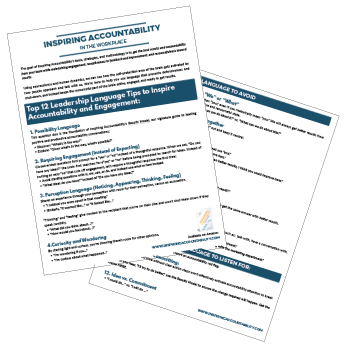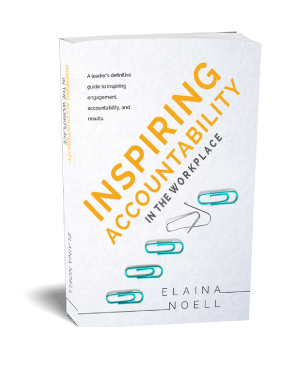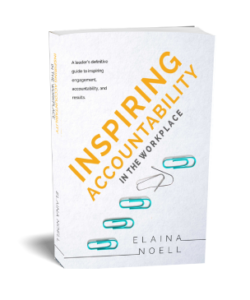How to Lead By Example When Holding an Employee Accountable

September 3, 2020
How to Lead By Example When Holding an Employee Accountable
If you want to lead by example when approaching accountability conversations, consider this fact: How you start an accountability conversation has a significant impact on how it ends. Traditional approaches are often uncomfortable for leaders and triggering for employees.
Lead the Way by Moving from Confrontations to Conversations
One profound shift all leaders can make is to lead the way by moving from accountability Confrontations to Conversations.
One way to do this is by getting in the right stance before beginning accountability conversations.
Our Inspiring Accountability methodology advocates for leaders to lead the way with the 4C’s of a positive and productive accountability approach. Here’s a quick overview of each:
Caring:
We define a caring stance as having an accountability conversation primarily because you care about their development and success. The “real” reason you’re having an accountability conversation is because they haven’t met an expectation and you need them to do or be better.
It might be reflecting poorly on your results or affecting your company’s bottom line, but humans are more receptive to change when we know what’s in it for us and it’s delivered with a belief in our abilities. When your employee feels like you are there to support instead of criticize, it will help your employee remain engaged, receptive, and resourceful. And it will also help you step into a Comfortable stance.
Connect with your Caring stance by asking yourself, “How do I remind myself that I’m having this conversation primarily to help my employee succeed?” When your employees succeed, so do you and so does your company. They’re intrinsically linked, so you may as well start by focusing your stance on supporting them, and you can trust that the results you need are much more likely to follow.
Comfortable:
If you’re nervous or uncomfortable, it will signal to them to be nervous or uncomfortable. When you adopt the Caring stance of connecting with you being a source of developmental feedback to serve your employee, it’s much easier to be comfortable.
When you feel comfortable, your employee also has a chance to feel comfortable. It can be helpful to ask yourself, “What do I need to do, think, or believe to get into a more comfortable stance before this conversation?”
Curious:
Humans are driven to be seen as contributing meaningfully, competent, and important. If this is not happening, the most useful response is to be curious about what could be in the way of them striving for these needs to be met. There are many reasons why employees disengage or become apathetic, but being seen as incompetent is still something we’re designed to protect against.
Infusing your stance with this curiosity, like by asking yourself, “I wonder what’s in the way of them showing up more competently,” helps your employees remain receptive to feedback and resourceful toward solutions.
Careful:
Often, employees have good intent (being really passionate about a project) that ends up having poor execution (interrupting and getting upset in meetings). When you provide negative feedback, be careful not to ignore the positive intent or behavior that accompanied the poor execution. When triggered and defensive, employees will often disengage completely.
When you address interrupting in meetings, it strengthens engagement and accountability to offer, “I know you are very passionate about the success in this project, and I want you to stay just as engaged in advocating for it. Where we need to work on is in interrupting others during project meetings. I’m curious about what your experience is regarding this?”
–
You don’t have to use frustration to communicate the seriousness of an issue or motivate change. You can lead the way with a lighter conversational approach when you have effective accountability tools and strategies – our specialty!
We’re here to help by offering Inspiring Accountability training, consulting, and coaching, along with our signature book and online course. Connect with us to see how we can support you and your team!
GET ACCESS TO OUR BEST TIPS
Download our Top 12 Leadership Language Tips to Inspire Accountability and Employee Engagement



